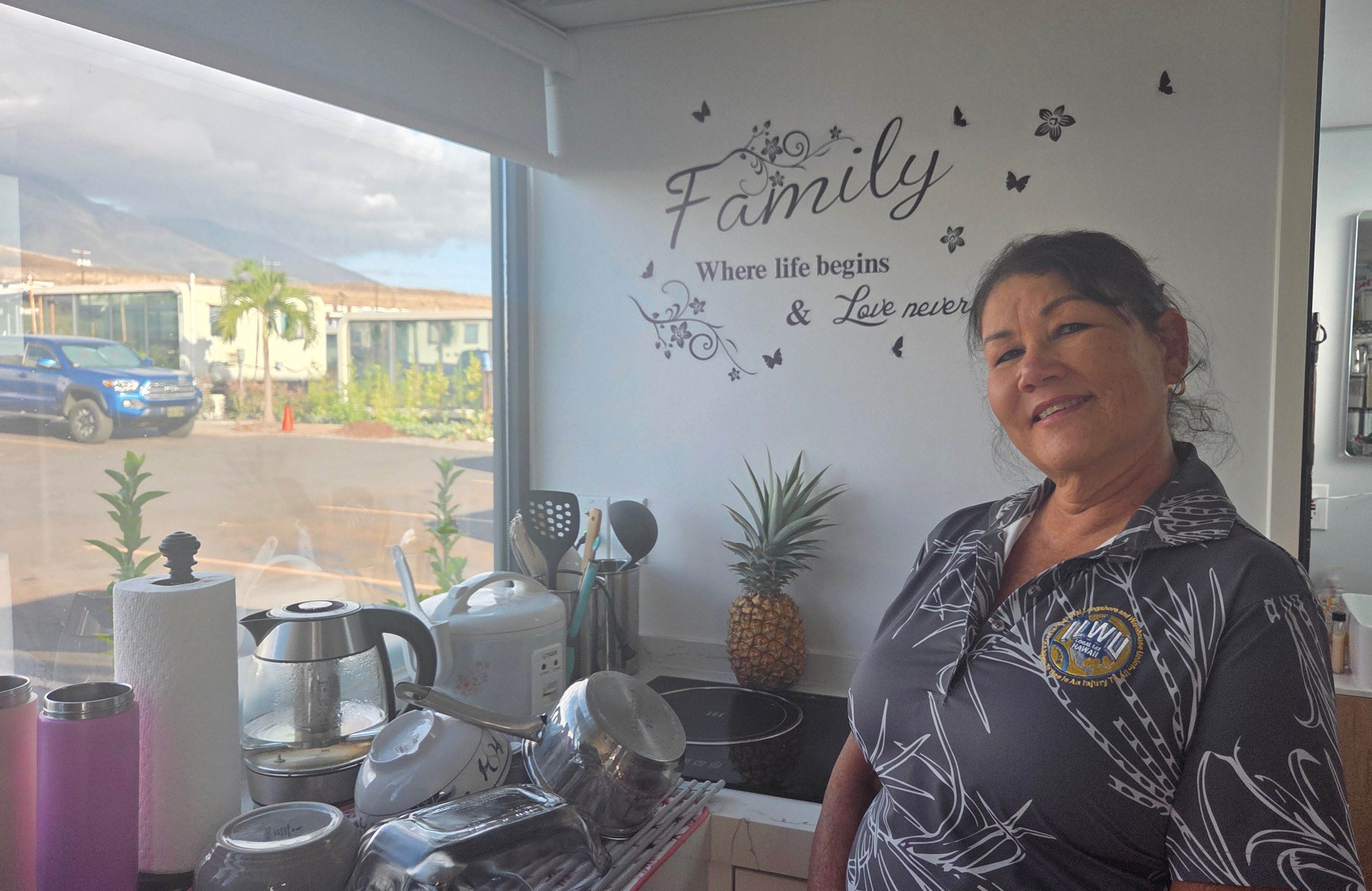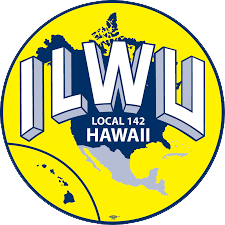AN INJURY TO ONE IS AN INJURY TO ALL
451 Atkinson Dr Honolulu, HI 96814
We'd like to hear from you.
Phone line
Mon to Fri 8:00am-4:00pm
Working hours
451 Atkinson Dr
Honolulu, HI 96814
Honolulu, HI 96814
Visit us
Embers of Hope: Lahaina’s Fight to Rebuild Two Years Later
August 11, 2025

It’s been two years since wind and fire mixed to set Lahaina ablaze. The devastation was swift and widespread — entire neighborhoods reduced to ash, hundreds displaced, and a beloved historic town forever changed. But in the months and years since, something else has taken root: the long, uneven, but determined path toward healing and rebuilding.
To mark this solemn anniversary, The Voice spoke with two ILWU members impacted by the fire, each offering a personal view of what “recovery” looks like. What we heard were stories of strength, neighborly care, and steady progress, alongside frustration, exhaustion, and the ongoing challenges that remain. For many, the fire exposed structural cracks that were already there: an overheated housing market, long permitting delays, and systemic barriers to rebuilding local lives. And yet, within the loss, many found new sources of solidarity and hope.
One of those members is Stephanie Smythe, a lifelong Lahaina resident, graduate of Lahainaluna, and now a Maui Division Business Agent. At the time of the fire, she was Unit Chair at Royal Lahaina. She also lost her home that day.
“I lost everything,” she shared. In the months that followed, Stephanie lived out of a room at the Royal Lahaina, balancing her union responsibilities while navigating her own displacement. Today, she calls Ka La‘i Ola home — a state-funded temporary housing community that opened its doors one year after the fire and now houses roughly 1,500 fire survivors.
Finding peace one year later
Nestled just mauka of Hawaiian Homes, Ka La‘i Ola was designed for stability and peace — and for many like Stephanie, it’s working. “I’m beyond pleased with the state for this housing,” she told The Voice. “I’m so happy and have gratitude for Governor Green for providing these units. Just this morning, we got a letter from the Governor letting us know that the waiver on rent and utilities is being extended until February 2026.”
Stephanie’s unit is a 296-square-foot one-bedroom laid out in a cluster with a dozen others — a neighborhood, with planter boxes, picnic tables, and communal grills. “It’s a good feeling,” she said, “considering you lost everything and were scattered — and then came together at Ka La‘i Ola. You’re in a neighborhood again.”
That sense of community is no small thing. “The little things we used to take for granted, they’re huge now,” she reflected. “Being able to say to your neighbor, ‘Hey, I just went to Costco, I don’t have room in my icebox — you got space?’ That’s mental health. Maybe even physical health.”
Her permanent home is still under construction. “It’s going, but it’s slow,” she said. Stephanie is among the many who are rebuilding one step at a time, with support from family, union siblings, and neighbors who may not be from the same neighborhood, “but I know all of them. They’re solid members of the community.”
The road for Stephanie has been rough. But progress toward peace and stability has been consistent. Not all survivors of the fires, however, have shared such a road. Owen Kahahane, Unit Chair at the Hyatt Regency, Kapalua, has had a rocky road to say the least, in his life after the fires.
The Struggle of the System
Owen Kahahane, Unit Chair for Unit 2516, the Hyatt Regency Maui, lost the home he shared with his extended family. Seven people lived in the house—his mother, siblings, their children—but because only his mother’s name was on the title, each family member had to file separately with FEMA as renters.
Owen lived at the Hyatt for six months following the fire. While grateful for the hotel’s shelter and meal program—three meals a day— he noted that it wasn’t always the healthiest, and it was no substitute for having a stable home. He technically owned a five-bedroom home in West Maui, but it was occupied by tenants paying $2,100 a month—well below market. “I thought about moving in,” he said, “but that would’ve meant evicting my tentants in the middle of a housing crisis. I couldn’t do that in good conscience.”
Instead, he and his wife were offered temporary housing in Haʻikū, a long drive from Lahaina on the other side of the island. The home had no air conditioning, and the summer heat was unbearable. When Owen purchased a portable AC unit, the homeowners association objected. What followed was four months of frustrating back-and-forth between FEMA, the HOA, and contractors just to get an AC installed. “We finally got it done, but it wore us out,” he said.
By February, they had left Haʻikū altogether. “The FEMA system just became too stressful. “There’s a psychological side to it that people don’t talk about,” Owen shared. After opting out of the FEMA program, he and his wife moved to a rental in Wailuku, where they now make the long daily commute to Lahaina for work.
The experience left him deeply critical of how housing support was handled. “The federal government agreeing to pay whatever landlords asked—that was a huge mistake. Short-term rental owners and landlords saw an opportunity, not a crisis,” he said. Owen later discovered that his landlord in Haʻikū had been charging FEMA $5,100 a month for their rundown two-bedroom unit.
Still, he keeps fighting. “This is why I fight for Bill 9,” Kahahane said. “We have to do something about the housing crisis on Maui. If we don’t, nothing’s going to change for working people like us.”
Bill 9 is a Maui County proposal that would limit short-term rentals in apartment-zoned areas—housing that was originally intended for local residents. Advocates like Kahahane say the bill is a crucial step to bring long-term housing back into the hands of working families.
In July, after months of organizing and testimony from unions, housing advocates, and fire survivors, the Maui County Council passed Bill 9 on first reading. The final vote is expected in August. For workers like Owen, it’s more than policy—it’s about protecting the future of life on Maui for everyday people.
Two years after the fires, the recovery in Lahaina is far from over. On a drive through Lahaina today, one sees mulitple government mini-home complexes up on the hill where a large number of survivors live. The debris is mostly cleared out and the new frames of one or two houses per block are beginning to stand up.
For some, the current phase has meant finding new forms of community in unexpected places. For others, it has meant confronting the harsh realities of a broken system— one that too often puts profits over people. But across every story, one thing is clear: the people, including ILWU members, are not finished fighting for their future.
Whether it’s organizing around legislation like Bill 9, caring for displaced neighbors, or simply showing up every day to rebuild their lives, members are proving that real recovery is collective. The path forward may be uneven, but it’s being shaped by the people who call Lahaina home—who lived the disaster, who stood by one another, and who continue to fight not just to recover what was lost, but to build something stronger in its place.
